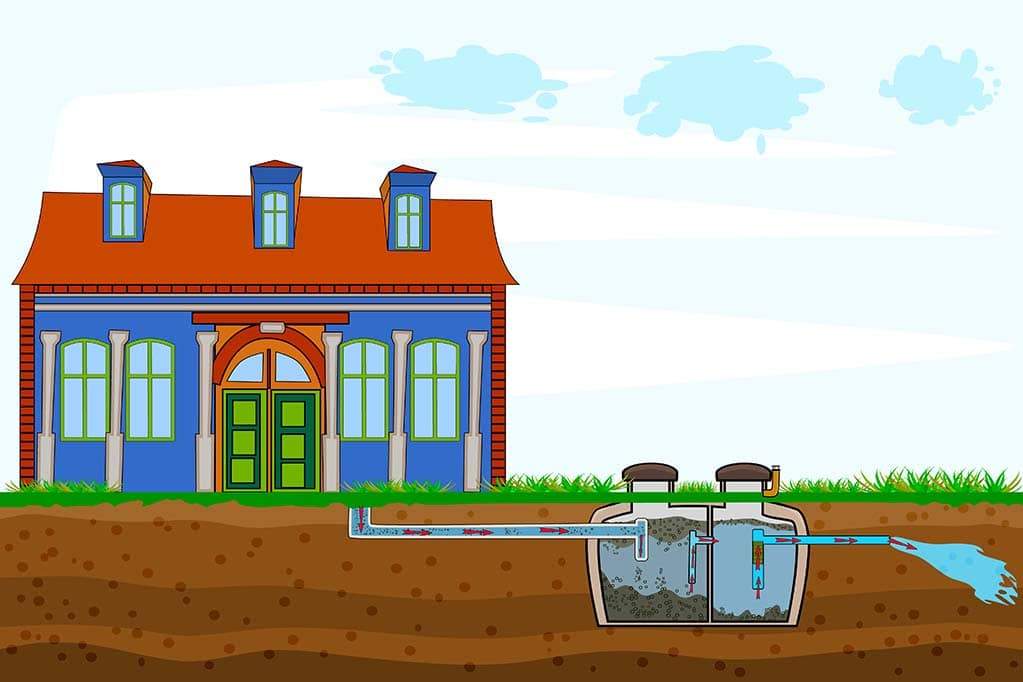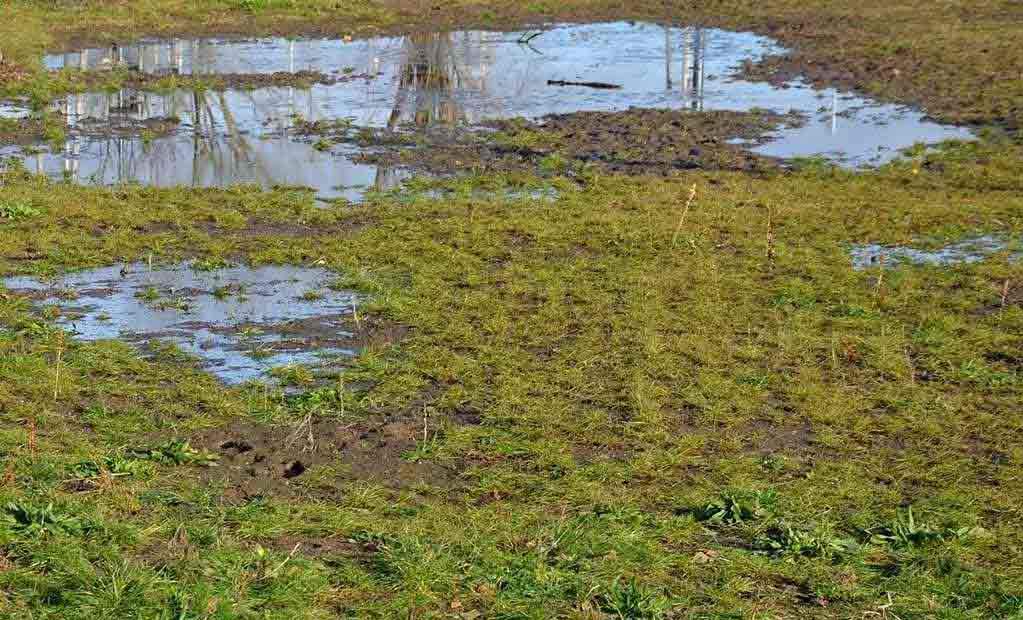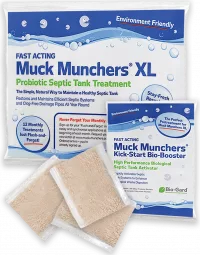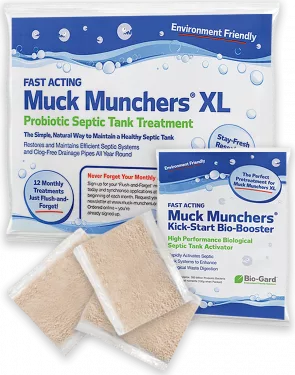What is a Septic Tank Soakaway?
A septic tank soakaway is used to safely drain off treated wastewater that has been flushed from your home.
All septic tanks and home septic systems rely on safe, efficient drainage. As your waste flushes into your tank, it needs somewhere to drain to. Given that it is not connected to the local main sewerage systems, it will therefore need a reliable connection between your tank and the ground.

This is where a septic tank soakaway comes in. A septic tank soakaway is used to safely drain off treated wastewater, thus allowing the effluent level in your tank to remain constant, leaving remaining organic solids to degrade with the help of bacterial breakdown.
There are different types of septic tank soakaway, and in some cases, this element to your septic system can be the cause of common problems. Let’s take a closer look at how septic soakaways work, and why they are so important.
How Does a Septic Tank Soakaway Work?
While the end goal of a septic tank soakaway is to drain waste liquid out of a septic tank and into the ground, different tanks require different solutions. For example, a home septic tank is unlikely to benefit from the same soakaway system you may expect in a large sewerage plant – waste treatment at home isn’t as extensive.
Commonly, you will find that home septic tanks are installed with drainage fields connected. Drainage fields are piping connections that allow wastewater to safely drain without causing environmental damage. Testing is required before a drainage field can be installed, as differing soil conditions and locations will contribute to the effectiveness of drainfields.
What Does a Septic Tank Soakaway Do?
Regardless of the type of septic tank soakaway installed, the aim is the same. Your septic tank needs to drain water somewhere so that it can continue to receive wastewater from household sinks, toilets, washing machines, dishwashers and showers. Without a soakaway, your septic tank will simply fill up and overflow.
Moreover, a septic tank soakaway is crucial for ensuring that only safe, purer and cleaner wastewater enters the ground in your local area. Poorly treated waste discharged from septic systems can pose risks to local wildlife, their habitats and drinking supplies. Therefore, an effective soakaway acts as a final treatment facility to ensure that discharges will cause no harm to the natural world.
Modern soakaway drain fields offer the best solutions over older standards, such as rubble pits, which may not drain wastewater as effectively, thus not protecting the local environment. The modern septic tank soakaway is designed to help keep septic tanks running from day to day without clogging, to ensure the local environment and wildlife do not suffer as a result.
Do All Septic Tanks Need a Soakaway?
In general, the answer is yes – in fact, all septic tanks must have some form of drainage available to allow the treated wastewater to drain away.
One exception is that some tanks discharge directly into a water course, such as a ditch, a river or lake. New rules introduced in 2020 require properties discharging directly into water courses to have a ‘package sewage treatment plant’ (a modern aerated septic tank) or install a soakaway.
The other exception is where the tank has no drainage at all – a cesspit or cess tank – which is simply a holding tank for wastewater that needs to be emptied frequently when full. While traditional septic tanks and modern package sewage treatment plants rely on bacteria, such as Muck Munchers to breakdown organic waste to treat the effluent effectively, in cess tanks the bacterial activity is largely ineffective, as whatever the quality of the wastewater, once full the tank will require emptying and the waste treated off-site.

Common Causes of Damaged and Blocked Soakaways
Unfortunately, there are cases where septic tank soakaways fail, creating drainage problems and reducing effective day-to-day running of septic tanks.
These are not always easy to spot. However, there are some tell-tale signs that can indicate problems with your soakaway and drainfield including:
- Pools of water around your tank
- Patches of lush looking grass
- Slow-draining baths, showers, sinks and basins
- Wastewater backing-up
Overflowing Effluent
Your soakaway and drain field can only handle so much. That is why it is always recommended not to drain too much water at once into your septic tank and system. It’s best to spread household water usage, as much as possible throughout the day, rather than all in one go. This can pose a risk of causing your soakaway to back-up. In addition, it may result in partially treated water entering the soakaway which can result drain field blockages.
Similar problems will arise if you are not maintaining your septic tank properly. You need to ensure that you maintain a healthy biologically active septic tank and to ensure that you not flushing any contaminants or materials that are not readily digestible by the tank’s microbe population.
Soil Compacting
For wastewater to drain efficiently into the local ground, the nearby soil needs to be sufficiently porous and for oxygen to percolate through the soil. Air needs to enter the soil to ensure that residual organic material discharged from the tank or treatment plant is broken down. If the soil is too heavily compacted, incomplete digestion can occur resulting in blockages.
It all means that you should not park or drive vehicles over the soakaway area and leave it in a natural state.
Tree Root Damage
Tree and large shrub damage can be a common cause of septic tank drainage problems.
This is unlikely to occur when a new system is installed, but over the years, trees and shrubs can grow deep roots that may damage the structure of your soakaway.
As such, it’s important to have a soakaway and drain field installed that is clear from extensive root growth, as well as open to air and free from compaction risk.
Waterlogging
Similarly, poor drainage from badly maintained ditches, high levels of rainfall and raised water tables mean that your soakaway is at risk of waterlogging. In addition, if the tank is discharging only partially treated waste this can result in poor drainage from the soakaway too. If the wastewater discharge cannot drain away it can result in waterlogged soil around the soakaway or back-ups to the septic tank.
Flushing only the three P’s – pee, poo and paper – will help keep your soakaway remain free from unnecessary clogs and waterlogging. It’s also worthwhile using Muck Munchers regularly to ensure your tank is discharging the purest treated water possible to the soakaway.
Sodium Binding
Depending on the type of cleaning solutions and products you flush and drain through your
septic tank and into your soakaway, you may find that salt can be a long-term major concern. This is because too much sodium can bind soil particles together, inhibiting drainage and again result in waterlogging.
Therefore, a safe option to avoid sodium binding from happening at all is to consider
the dishwasher cleaner you use. Salt–based dishwashing may not cause major issues, but to keep your soakaway and drainage working for you for the years ahead, it’s important to be aware.
If you use a salt-based water softener it is essential that the back wash is not discharged to your septic tank, simply because you are discharging massive amounts of salt. For further information please read our Water Softener Blog.
In Summary
While you may not be able to see your septic tank soakaway or drainage field, they are crucial elements in virtually all septic tank systems. It makes the difference between a septic tank that is over-flowing and a septic tank that drains efficiently, withoutthe need for expensive and unnecessary pump-outs.
A well-maintained septic tank and soakaway should will passively drain away your wastewater for years to come.
The key here is ‘well-maintained’. Always ensure you keep your septic tank topped-up with Muck Munchers on a monthly basis to reduce sludge and solid levels, and to only ever flush waste material that septic waste bacteria can break down. Anything other than the three P’s can pose blockage and overflow risks for your soakaway – so do take care about what you flush and drain.










